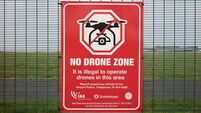Renewed call for probe likely after disaster findings
The finding was made by British scientists after a study of weather patterns and distribution of radioactive material in the aftermath of the accident at the Cumbrian plant, renamed Sellafield in subsequent years.
Dundalk-based campaigners have long argued a cluster of Downs Syndrome cases in the region may have been caused by radiation emitted by the 1957 fire.













